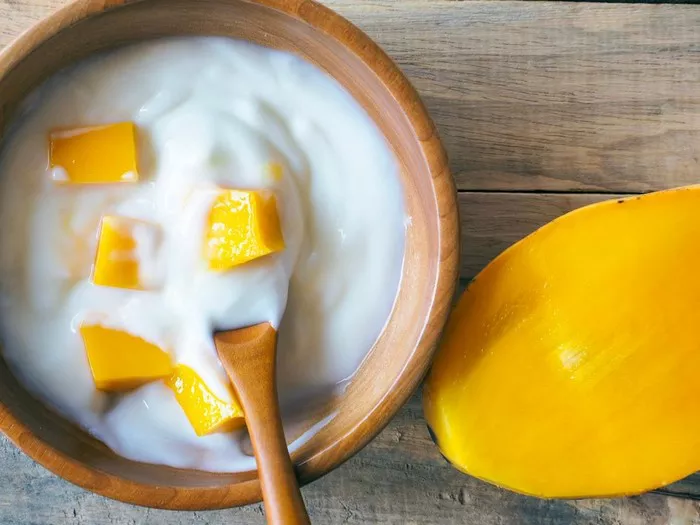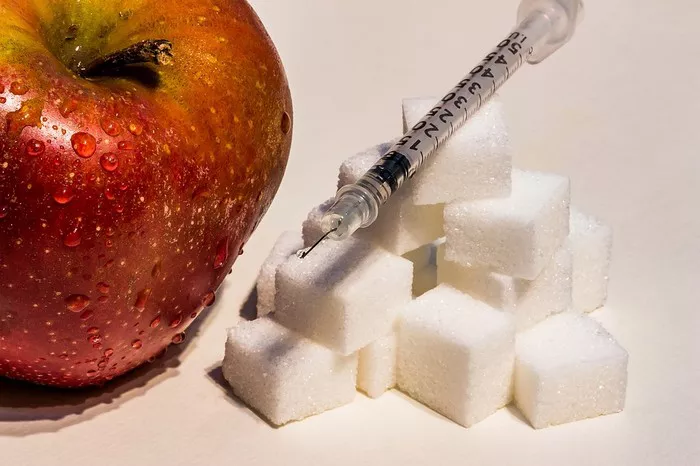Living with diabetes necessitates careful attention to diet to manage blood sugar levels effectively. As a diabetes doctor, I’ve seen firsthand how dietary choices can significantly impact the quality of life for those managing this condition. This guide aims to provide a detailed overview of what diabetics should and shouldn’t eat, helping you make informed decisions for a healthier lifestyle.
Understanding Diabetes and Diet
Diabetes is a chronic condition characterized by elevated blood glucose levels due to the body’s inability to produce or use insulin effectively. There are two main types of diabetes: Type 1, an autoimmune condition where the body does not produce insulin, and Type 2, where the body becomes resistant to insulin or doesn’t produce enough. Gestational diabetes, a temporary form occurring during pregnancy, also warrants dietary consideration.
Diet plays a pivotal role in managing diabetes. Proper nutrition can help maintain blood glucose levels within target ranges, prevent complications, and support overall health. The goal is to consume a balanced diet that provides essential nutrients while controlling carbohydrate intake to avoid spikes in blood sugar levels.
The Importance of Carbohydrates
Carbohydrates have the most significant impact on blood sugar levels. When consumed, they break down into glucose, entering the bloodstream and raising blood sugar. Therefore, managing carbohydrate intake is crucial for diabetics.
Good Carbohydrates vs. Bad Carbohydrates
Good Carbohydrates: Found in whole grains, vegetables, fruits, and legumes. These carbs are high in fiber, which slows glucose absorption and helps maintain steady blood sugar levels.
Bad Carbohydrates: Found in processed foods, sugary snacks, white bread, and sugary drinks. These carbs cause rapid spikes in blood sugar and should be limited.
Carbohydrate Counting
Carbohydrate counting is a method used to track the number of carbs consumed at each meal. This technique helps diabetics balance their meals and control blood sugar levels. It’s essential to work with a healthcare provider or dietitian to determine the appropriate amount of carbohydrates per meal based on individual needs and activity levels.
What Diabetics Can Eat
Non-Starchy Vegetables
Non-starchy vegetables are low in calories and carbohydrates, making them an excellent choice for diabetics. They are also high in fiber, vitamins, and minerals. Examples include:
Leafy Greens: Spinach, kale, and Swiss chard.
Cruciferous Vegetables: Broccoli, cauliflower, and Brussels sprouts.
Other Vegetables: Peppers, tomatoes, cucumbers, and zucchini.
Lean Proteins
Protein is essential for maintaining muscle mass and supporting overall health. Lean proteins are lower in fat and calories, making them suitable for diabetics. Examples include:
Poultry: Chicken and turkey without skin.
Fish: Salmon, mackerel, and sardines are rich in omega-3 fatty acids, which are beneficial for heart health.
Plant-Based Proteins: Beans, lentils, tofu, and tempeh.
Low-Fat Dairy: Greek yogurt, cottage cheese, and low-fat milk.
Whole Grains
Whole grains are a better choice than refined grains because they contain more fiber and nutrients. They help maintain stable blood sugar levels. Examples include:
Quinoa: A high-protein, gluten-free grain.
Brown Rice: Provides more fiber than white rice.
Whole Wheat: Whole wheat bread, pasta, and tortillas.
Oats: Rolled or steel-cut oats are better than instant varieties.
Fruits
While fruits contain natural sugars, they are also rich in fiber, vitamins, and antioxidants. The key is to choose fruits with a low glycemic index and consume them in moderation. Examples include:
Berries: Strawberries, blueberries, raspberries, and blackberries.
Apples: Particularly with the skin on.
Pears: Also with the skin on.
Citrus Fruits: Oranges, grapefruits, and lemons.
Healthy Fats
Healthy fats are important for heart health and can help manage blood sugar levels. Focus on unsaturated fats and avoid trans fats. Examples include:
Avocado: High in monounsaturated fats.
Nuts and Seeds: Almonds, walnuts, chia seeds, and flaxseeds.
Olive Oil: Extra virgin olive oil for cooking and dressings.
Fatty Fish: Salmon and mackerel for omega-3 fatty acids.
Legumes
Legumes, such as beans and lentils, are excellent sources of protein, fiber, and complex carbohydrates. They have a low glycemic index and can help manage blood sugar levels.
Black Beans: Rich in protein and fiber.
Chickpeas: Great for making hummus or adding to salads.
Lentils: Versatile and can be used in soups, stews, and salads.
Dairy and Alternatives
Low-fat dairy products and fortified plant-based alternatives can provide essential nutrients without excessive fat or sugar. Examples include:
Greek Yogurt: Higher in protein and lower in carbs.
Skim or Low-Fat Milk: Provides calcium and vitamin D.
Almond Milk: A low-carb alternative to cow’s milk.
Soy Milk: Fortified with vitamins and minerals.
Foods Diabetics Should Avoid
Sugary Foods and Beverages
Sugary foods and beverages cause rapid spikes in blood sugar levels and provide little nutritional value. Examples to avoid include:
Sodas: Regular sodas and sugary drinks.
Candy: Hard candies, gummies, and chocolate bars.
Baked Goods: Cookies, cakes, pastries, and doughnuts.
Ice Cream: High in sugar and fat.
Refined Carbohydrates
Refined carbohydrates lack fiber and nutrients, leading to rapid blood sugar spikes. Examples to avoid include:
White Bread: Switch to whole grain or whole wheat alternatives.
White Rice: Opt for brown rice or quinoa.
Pastries: Often high in sugar and refined flour.
Sugary Cereals: Choose whole grain, low-sugar cereals instead.
Trans Fats
Trans fats are harmful to heart health and can worsen insulin resistance. They are often found in:
Fried Foods: French fries, fried chicken, and other deep-fried items.
Baked Goods: Cookies, cakes, and pies made with hydrogenated oils.
Snack Foods: Packaged snacks like chips and crackers.
High-Fat Meats
High-fat meats can increase cholesterol levels and contribute to heart disease. Examples to limit include:
Processed Meats: Sausages, hot dogs, and bacon.
Fatty Cuts of Meat: Ribeye, T-bone steaks, and pork belly.
Full-Fat Dairy: Whole milk, cream, and full-fat cheeses.
High-Sodium Foods
High sodium intake can increase blood pressure, which is particularly concerning for diabetics. Examples to avoid include:
Processed Foods: Canned soups, frozen dinners, and packaged snacks.
Salty Snacks: Potato chips, pretzels, and salted nuts.
Restaurant Foods: Especially fast food and takeout items.
Alcohol
Alcohol can cause blood sugar levels to fluctuate and may interact with diabetes medications. If consumed, it should be done in moderation and with food. Examples to limit include:
Beer: High in carbohydrates.
Sweet Wines: High in sugar.
Mixed Drinks: Often contain sugary mixers.
Building a Diabetes-Friendly Meal Plan
Creating a balanced meal plan involves choosing foods that help manage blood sugar levels while providing essential nutrients. Here are some tips for building a diabetes-friendly meal plan:
Breakfast
Whole Grain Toast: Topped with avocado or a poached egg.
Greek Yogurt Parfait: With fresh berries and a sprinkle of chia seeds.
Oatmeal: Made with rolled or steel-cut oats, topped with nuts and cinnamon.
Lunch
Salad: Mixed greens with grilled chicken, nuts, and a vinaigrette dressing.
Quinoa Bowl: With black beans, roasted vegetables, and a lime dressing.
Turkey Wrap: In a whole wheat tortilla with plenty of veggies.
Dinner
Grilled Salmon: With a side of steamed broccoli and quinoa.
Stir-Fry: Using tofu or chicken with a variety of non-starchy vegetables.
Vegetable Soup: Made with lentils, tomatoes, and plenty of herbs.
Snacks
Fresh Fruit: Such as an apple or a handful of berries.
Nuts: A small handful of almonds or walnuts.
Veggie Sticks: Carrot, cucumber, and bell pepper sticks with hummus.
Greek Yogurt: A small serving with a sprinkle of flaxseeds.
Monitoring and Adjusting Your Diet
Regular monitoring of blood sugar levels is essential for understanding how different foods affect your body. Keep a food diary to track meals, snacks, and blood sugar readings. This practice helps identify patterns and make necessary adjustments.
Portion Control
Portion control is crucial for managing blood sugar levels. Even healthy foods can cause spikes if consumed in large quantities. Use smaller plates, measure servings, and be mindful of portion sizes.
Glycemic Index and Glycemic Load
The glycemic index (GI) measures how quickly a food raises blood sugar levels. Foods with a low GI are better for blood sugar control. Glycemic load (GL) considers both the GI and the carbohydrate content in a typical serving. Both tools can help diabetics choose appropriate foods.
Hydration
Staying hydrated is essential for overall health and can help manage blood sugar levels. Water is the best choice, but other low-calorie options like herbal tea and sparkling water are also good. Avoid sugary drinks and limit fruit juices.
Special Considerations
Type 1 Diabetes
People with Type 1 diabetes need to balance insulin administration with carbohydrate intake. They should work closely with their healthcare team to adjust insulin doses based on their diet and blood sugar readings.
Type 2 Diabetes
For those with Type 2 diabetes, diet and exercise play a significant role in managing the condition. Weight loss, if needed, can improve insulin sensitivity and blood sugar control. A diet rich in fiber, lean proteins, and healthy fats is beneficial.
Gestational Diabetes
Gestational diabetes requires careful monitoring to ensure the health of both the mother and the baby. A balanced diet with controlled carbohydrate intake and regular physical activity is crucial. Pregnant women should work with their healthcare provider to develop a suitable meal plan.
See also:Is it OK for Diabetics to Eat Apples?
Conclusion
Managing diabetes through diet involves making informed choices to maintain stable blood sugar levels and support overall health. Emphasize non-starchy vegetables, lean proteins, whole grains, healthy fats, and low-glycemic fruits. Avoid sugary foods, refined carbohydrates, trans fats, high-fat meats, and high-sodium foods.
Regular monitoring, portion control, and staying hydrated are essential components of a diabetes-friendly lifestyle. Special considerations for different types of diabetes highlight the importance of personalized care and collaboration with healthcare providers.
By adopting a balanced, nutritious diet and making mindful food choices, diabetics can effectively manage their condition and enjoy a better quality of life.
Related topics:
What Can People Eat With Diabetes

























